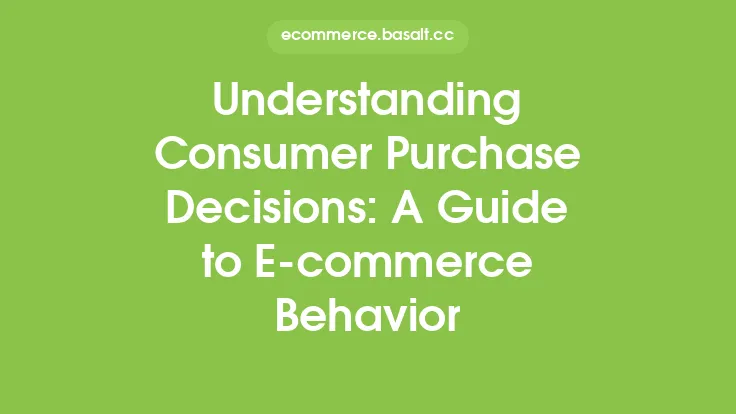When it comes to creating a successful e-commerce website, understanding consumer behavior is crucial. By analyzing how consumers interact with a website, businesses can identify areas for improvement and optimize their design to increase conversions and sales. Consumer behavior analysis is a vital component of e-commerce trends, as it helps businesses to stay ahead of the competition and provide a better user experience for their customers.
Introduction to Consumer Behavior Analysis
Consumer behavior analysis is the process of studying how consumers make purchasing decisions and interact with a website. This involves analyzing data on consumer behavior, such as click-through rates, bounce rates, and conversion rates, to identify patterns and trends. By understanding consumer behavior, businesses can identify areas of their website that may be causing friction or confusion, and make data-driven decisions to improve the user experience.
Understanding Consumer Motivations
To analyze consumer behavior effectively, businesses need to understand what motivates consumers to make a purchase. This can include factors such as price, quality, convenience, and customer service. By understanding what drives consumer behavior, businesses can tailor their website design and marketing strategies to meet the needs of their target audience. For example, if a business finds that their target audience is motivated by price, they can optimize their website to highlight discounts and promotions.
The Role of User Experience in Consumer Behavior
User experience (UX) plays a critical role in consumer behavior, as it can either facilitate or hinder the purchasing process. A well-designed website with a clear and intuitive navigation can make it easy for consumers to find what they are looking for and complete a purchase. On the other hand, a poorly designed website with a cluttered and confusing layout can lead to frustration and abandonment. By prioritizing UX, businesses can create a website that is tailored to the needs of their target audience and provides a seamless and enjoyable shopping experience.
Analyzing Consumer Behavior Data
To optimize e-commerce website design, businesses need to analyze consumer behavior data. This can include data on website traffic, click-through rates, bounce rates, and conversion rates. By analyzing this data, businesses can identify areas of their website that may be causing friction or confusion, and make data-driven decisions to improve the user experience. For example, if a business finds that a high percentage of consumers are abandoning their shopping cart at the checkout stage, they can investigate the cause of this issue and make changes to simplify the checkout process.
Best Practices for Optimizing E-commerce Website Design
To optimize e-commerce website design, businesses should follow best practices such as simplicity, clarity, and consistency. A simple and intuitive website design can make it easy for consumers to navigate and find what they are looking for. Clear and concise product information can help consumers to make informed purchasing decisions. Consistent branding and design elements can help to build trust and credibility with consumers. By following these best practices, businesses can create a website that is tailored to the needs of their target audience and provides a seamless and enjoyable shopping experience.
The Importance of Mobile Optimization
With the increasing use of mobile devices to access the internet, mobile optimization is critical for e-commerce websites. A mobile-optimized website can provide a seamless and enjoyable shopping experience for consumers, regardless of the device they use to access the website. By optimizing their website for mobile devices, businesses can increase conversions and sales, and provide a better user experience for their customers.
The Role of Personalization in Consumer Behavior
Personalization plays a critical role in consumer behavior, as it can help businesses to tailor their website design and marketing strategies to meet the needs of individual consumers. By using data and analytics to understand consumer behavior and preferences, businesses can create a personalized shopping experience that is tailored to the needs of each individual consumer. This can include personalized product recommendations, special offers, and content that is relevant to the consumer's interests.
Conclusion
Analyzing consumer behavior is critical for optimizing e-commerce website design. By understanding consumer motivations, prioritizing user experience, and analyzing consumer behavior data, businesses can create a website that is tailored to the needs of their target audience and provides a seamless and enjoyable shopping experience. By following best practices such as simplicity, clarity, and consistency, and optimizing their website for mobile devices, businesses can increase conversions and sales, and provide a better user experience for their customers. Ultimately, the key to success in e-commerce is to understand consumer behavior and tailor website design and marketing strategies to meet the needs of the target audience.





